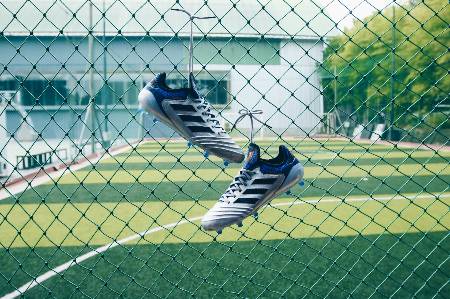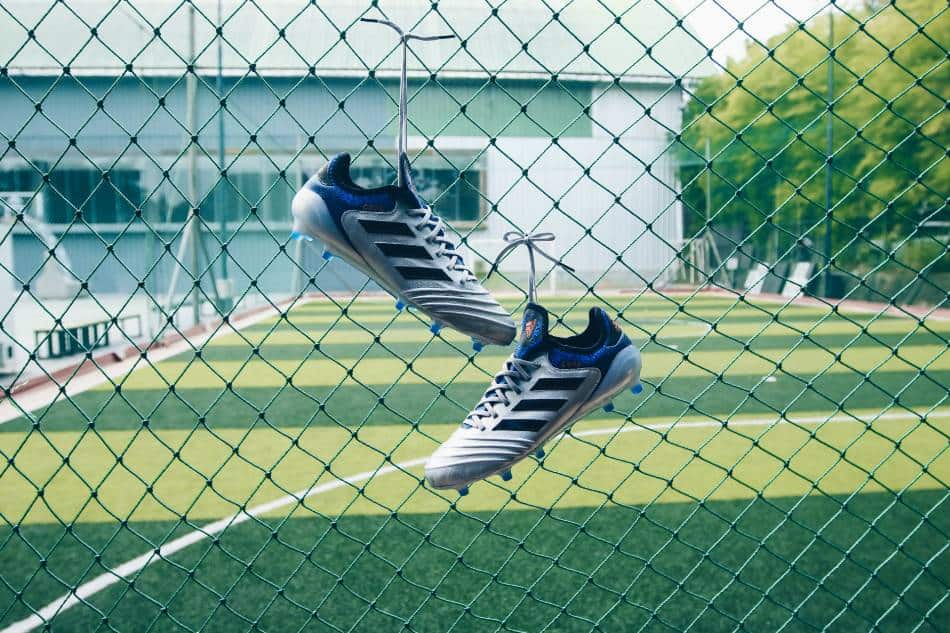
I can’t seem to go a softball game without my teammates giving me a hard time about wearing soccer cleats. Wearing cleats from different sports might not be optimal, but sometimes they can get the job done.
So what are the differences between sports cleats?
The differences between sports cleats are that some have extra studs and/or offer lots of support, while others are minimalistic and designed for speed. Cleats from different sports tend to be made in different ways and of different materials. Some cleats can be used in multiple sports.
Each sport has its own types of cleats to maximize performance. For more information on how cleats differ from sport-to-sport, we invite you to read on.
Soccer Cleats
Soccer cleats are very versatile and can be used for most sports. Cleats from other sports don’t work for soccer. Good soccer referees will check the cleats of each player before play begins to ensure everyone is wearing proper cleats.
Even though you can use soccer cleats for other sports, they shouldn’t be your first option. Soccer cleats tend to offer less support than is recommended for other sports.
These cleats are characterized by a lower cut and a lightweight design. The studs on the cleats are rubber and tend to be shorter than other sports. Since players aren’t as high off the ground, players are afforded extra balance.
The cleats are shorter in length than other sports cleats and there are different options available to buy. There are shoes made specifically for grass, others for firm ground and even more for turf. Soccer cleats are flexible and a sucker for punishment.
Baseball Cleats
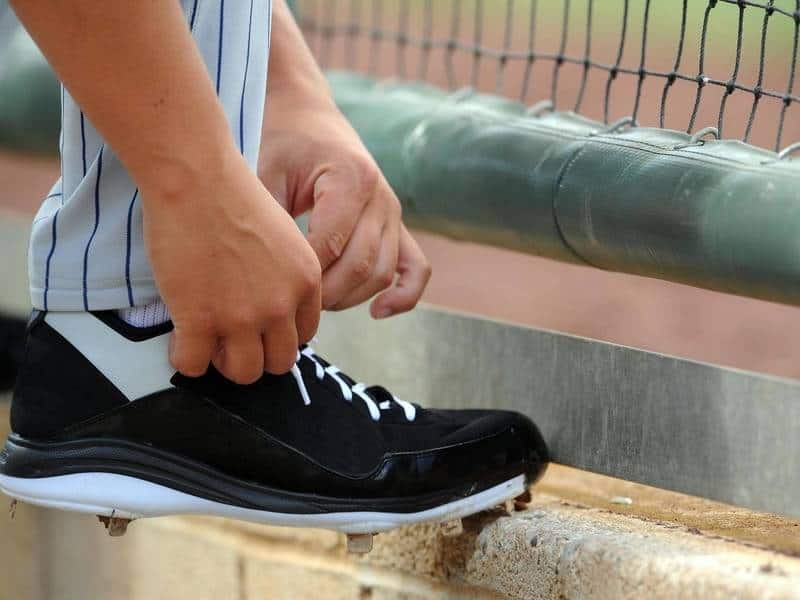
Baseball cleats are pretty easy to identify as they have a toe spike. These toe spikes, along with the rest of the studs on baseball cleats, are made of metal or molded plastic. The toe spike is designed to help you dig in and get better jumps. This helps with breaking toward a batted ball and stealing bases.
The cleats also have a “middle cleat” or stud in the sole of the shoe for extra traction. Baseball cleats tend to have a lower cut for improved lateral movement and are generally not too heavy. There are heavy options available for players who’d like more support.
Baseball cleats may work for lacrosse depending on the stance of your local league or organization. Metal cleats are not viable for lacrosse. Molded plastic spikes are not optimal but can work for lacrosse if they’re allowed.
Football Cleats
Football cleats are larger and offer more support than cleats of other sports. They are longer than cleats from other sports, have a toe stud and generally come in three variations. These variations are: high-tops, mid-tops and low-cuts.
High-Top Football Cleats
The preferred option for players who need lots of support, such as defensive and offensive linemen. These cleats cover the ankle and are heavier in weight than mid-tops and low-cuts. They offer less mobility as a result.
Mid-Top Football Cleats
Offer less support than high-tops but more support than low-cuts. They are designed to offer additional support without sacrificing too much in the way of mobility. Positions that often use mid-tops are running backs, quarterbacks, wide receivers and defensive backs.
Low-Cut Football Cleats
The lightest among the three cleat options but offer the least amount of support. These cleats stop before the ankles and are worn by some skill players who want to maximize their performance.
Despite their difference, football cleats of all verities have a lot of similarities. Football cleats have longer studs, which are positioned around the outside of the cleat to improve lateral movement. These cleats don’t have a middle cleat like baseball and some cleats have replaceable studs.
Lacrosse Cleats
Lacrosse cleats are similar to football cleats in the sense that they’re designed for multiple field conditions. Like football, lacrosse cleats also come in different heights that offer varying levels of support.
Players who find themselves in the thick of the action may opt for cleats that offer more support than performance. Lacrosse cleats also tend to have mesh properties to increase breathability and to allow moisture to escape.
Lacrosse cleats have a toe spike, so they should work for your local baseball league but you should check with the league to be safe.
Golf Cleats / Golf Shoes
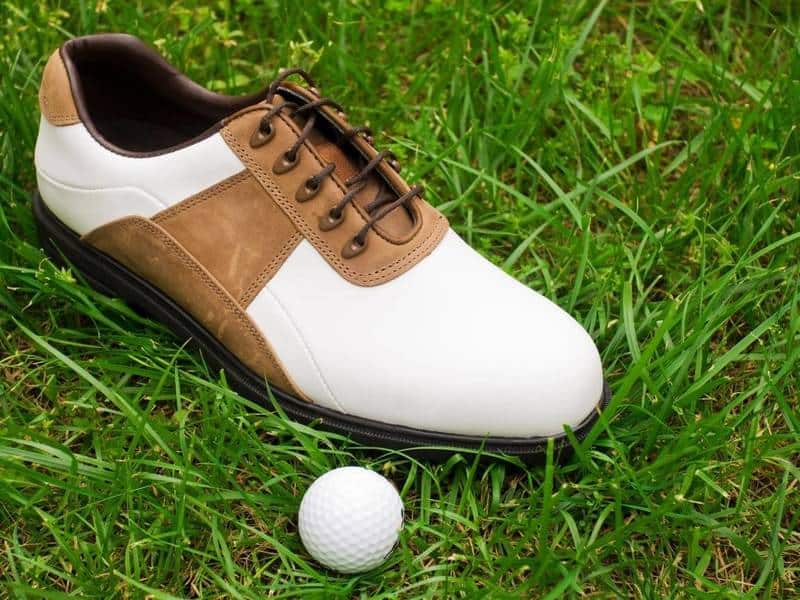
Golf cleats (shoes) are designed to help golfers keep their feet planted when they swing. These cleats are invaluable for dealing with light rain and morning dew. Golf cleats come in three variations: metal, synthetic and ceramic.
Metal Golf Shoes
The most durable and heaviest of the options available but aren’t universally allowed on golf courses. Most courses don’t allow metal cleats anymore because they tend to tear up the course, especially the greens.
Synthetic Golf Shoes
Otherwise known as “soft spikes”, these shoes are the most popular option for golfers. They are made of a polyurethane outsole and are cheaper than metal and ceramic shoes. Soft spikes are lightweight and offer increased flexibility.
Ceramic Golf Shoes
The most expensive type of golf shoe. These shoes are long-lasting and very tough. This is why they’re the preferred choice of professional golfers. Ceramic shoes don’t get damaged easily but you should keep them in good condition to prevent corrosion.
Back in the day, golf shoes looked eerily similar to dress shoes. They also felt like dress shoes – they were uncomfortable! Things have changed over time as technology has improved. As a result, golf shoes have begun to resemble athletic shoes.
Speaking of athletic shoes, they are generally allowed on the course but don’t help you stay upright when swinging your clubs. Some golf shoes have molded grips to help you stay on your feet.
Golf shoes also come in a ton of different options. If you’re someone who likes to match your shoes to your attire, you’ll have plenty of options available.
Track Spikes
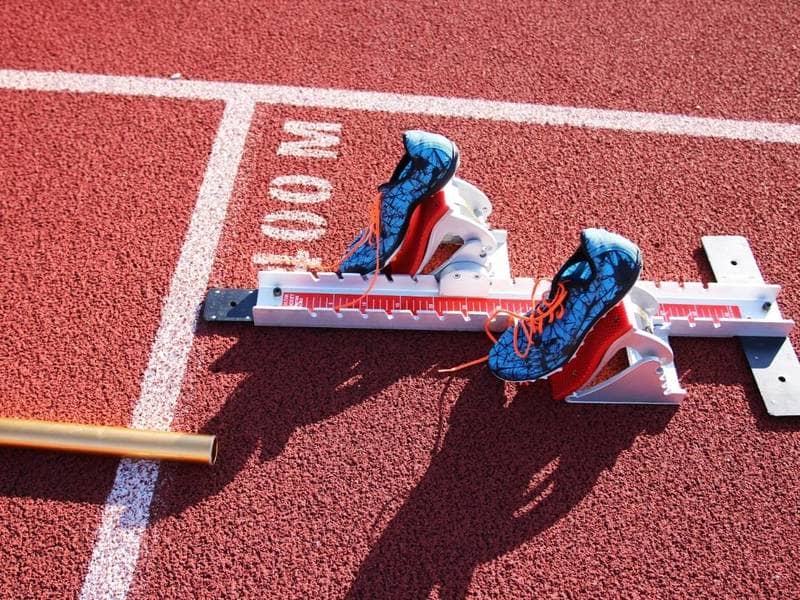
There are many cleats or “spikes” that track and field athletes utilize. A lot of these spikes are event specific but some spikes favor certain races but aren’t just for one type of event.
Sprint Spikes
Sprint spikes are lightweight and offer a minimalistic design. These spikes are designed for running on tracks and don’t have a lot of support. The spikes are concentrated around the balls of your feet because you’ll utilize that area the most during sprints.
Sprint spikes aren’t designed to be worn all the time. Their purpose is for maximizing performance. Outside of races and high-intensity practices, they shouldn’t be worn.
Mid Distance Spikes
Middle distance spikes are more flexible than sprint spikes, offer some heel support and have fewer spikes overall. These spikes might have some padding by the heel and are generally used in mid-distant events.
Long Distance Spikes
Long-distance spikes have a more comfortable design and move with your foot more, compared with sprint and mid-distance spikes. There are some variations among long-distance spikes.
Runners can opt for a more minimalistic design or they can go with a heavy spike that has more support. Long-distance spikes have the fewest number of spikes of these three spike types.
What Are Baseball Cleats Made Out of?
Baseball cleats are typically made out of one of two options:
Genuine Leather Baseball Cleats
Cleats made from genuine leather offer more breathability and last longer. The downside of these cleats is that they cost more.
Synthetic Leather Baseball Cleats
The pros of synthetic leather cleats are that they are cheaper than genuine leather cleats and they offer extra support across the foot. The downside of synthetic leather is that they don’t feel and perform quite the same as genuine leather.
What are Soccer Cleats Made Out of?
Soccer cleats are generally made of one of the following:
Natural Leather Soccer Cleats
These cleats are generally made from calfskin and provide a unique feel and a great touch.
Synthetic Leather Soccer Cleats
Cleats made from synthetic leather are meant to imitate the feel of natural leather. They don’t quite offer the same quality as natural leather cleats, but that gap continues to close as technology improves.
Kangaroo Leather Soccer Cleats
The quality of these cleats tends to be very high. Kangaroo leather molds to your feet and offers an unrivaled feel. The downsides are that they aren’t as durable as the other options available and they cost more.
Kangaroo leather cleats can be tricky to obtain. The combination of work from activists and passed bills have made these shoes unavailable in certain states.
Synthetic Leather Soccer Cleats
Synthetic cleats are durable and retain their shape. They don’t feel as natural as any of the other types of cleats. These cleats are thicker, stiffer and don’t stretch over time.
